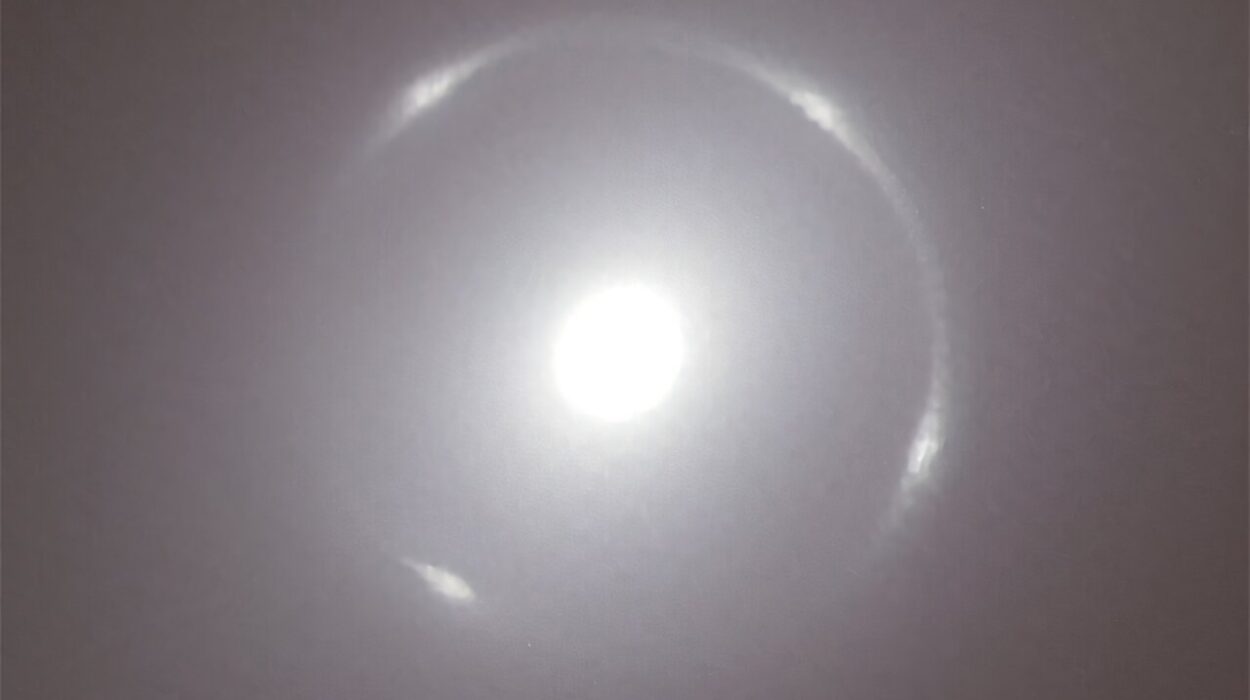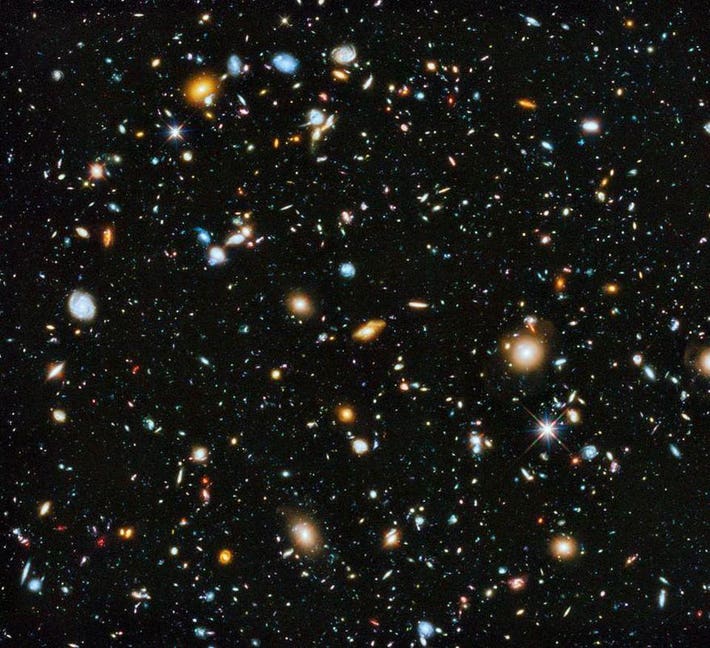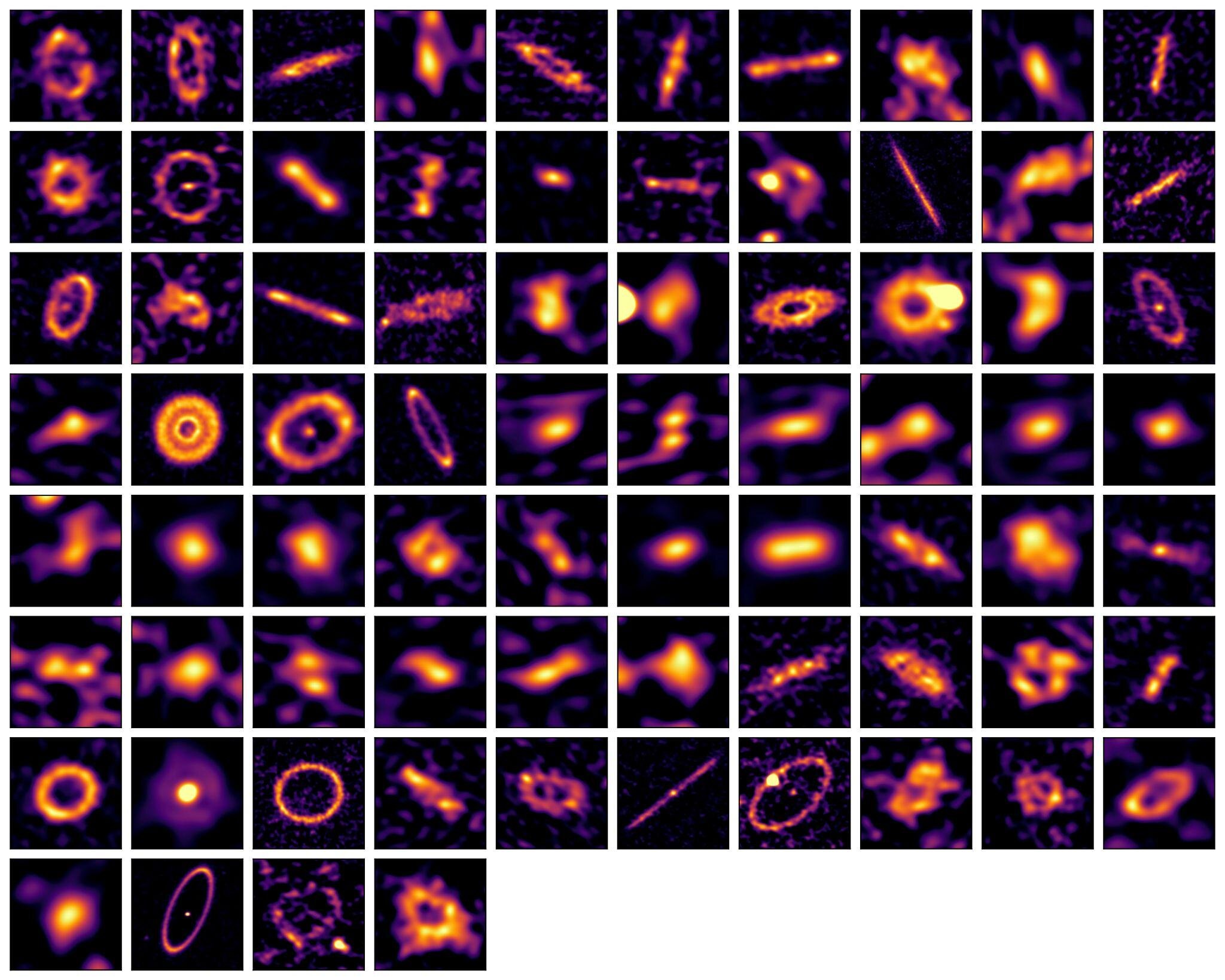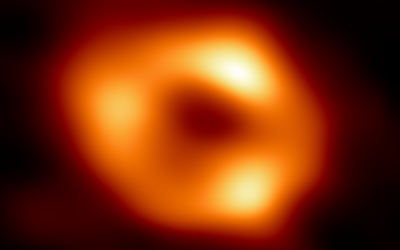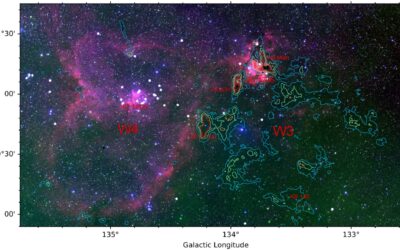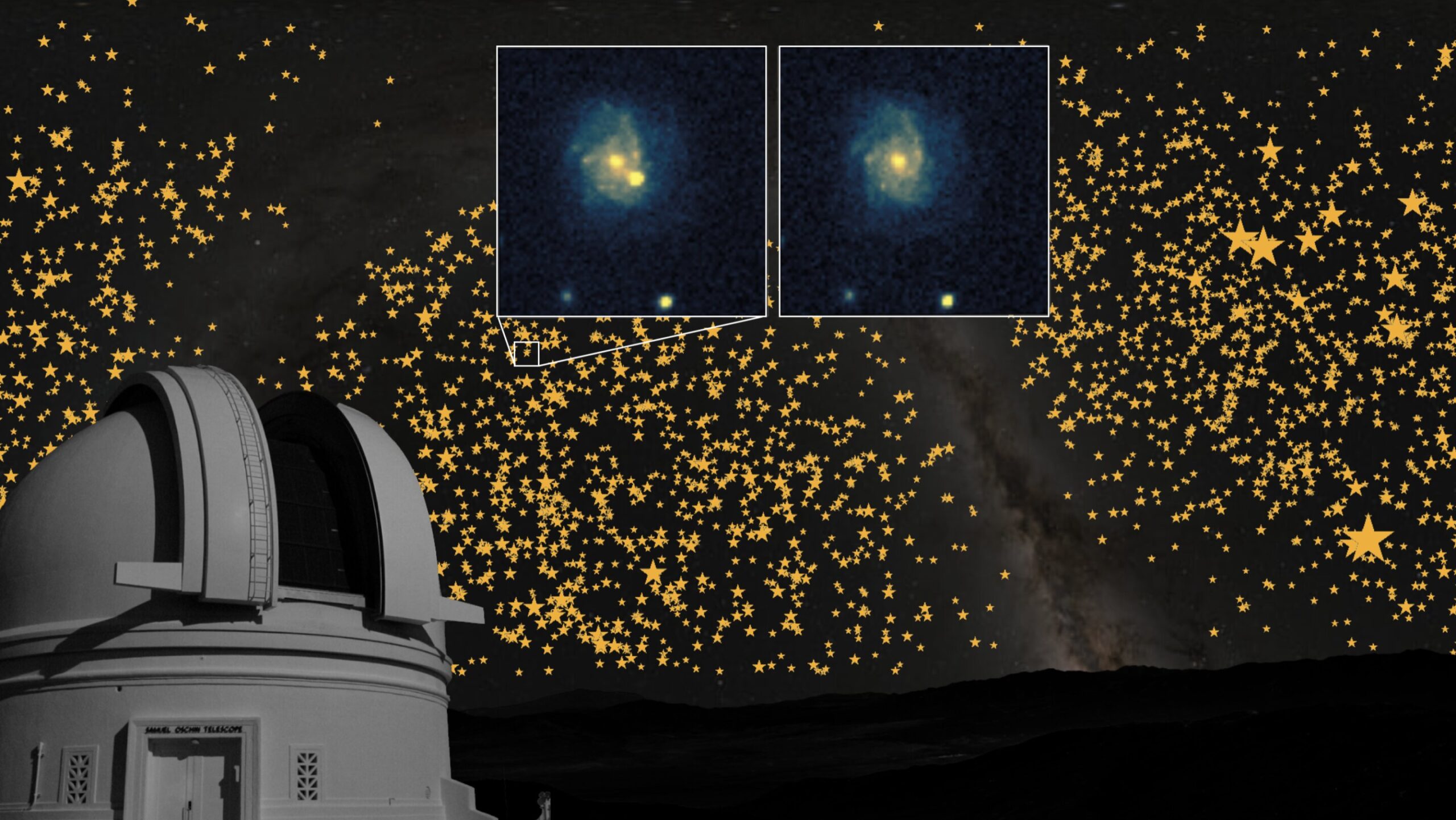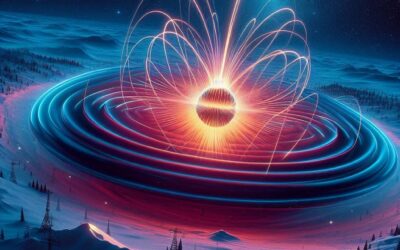In the realm of astronomical exploration, few discoveries capture the imagination like those related to the fundamental forces shaping the universe. One of the most recent and intriguing discoveries in this field came from the European Space Agency’s Euclid mission, which was launched on July 1, 2023, to investigate the dark universe. Despite being in its early phases of operation, Euclid has already made significant strides, unveiling an astonishing and rare phenomenon: an Einstein Ring.
An Einstein Ring is a spectacular display caused by the phenomenon of gravitational lensing. Gravitational lensing occurs when a massive object, like a galaxy or a cluster of galaxies, bends the light from a more distant object, distorting it in such a way that it forms a ring-like structure around the foreground object. This effect is a direct consequence of Albert Einstein’s general theory of relativity, which predicted that massive objects could bend light due to their gravitational pull. While Einstein rings are rare, they serve as powerful tools for studying some of the universe’s most mysterious elements, including dark matter and dark energy.
The story of Euclid’s discovery of this Einstein Ring began with a set of images taken by the spacecraft during its early testing phase in September 2023. At first, the images were intentionally out of focus, but even in their blurry state, one of Euclid’s scientists, Bruno Altieri, saw a potential clue that hinted at the presence of this rare astronomical feature. After further observations, the team confirmed their suspicions. What they had discovered was not just any Einstein Ring, but one located around a galaxy known as NGC 6505, which is about 590 million light-years away from Earth.
NGC 6505 itself had been known to astronomers for some time, first discovered in 1884, yet this ring of light had never been observed before. This discovery was made possible by Euclid’s high-resolution instruments, which were able to resolve details of the phenomenon that had eluded previous observations. What makes this particular Einstein Ring especially remarkable is that it’s located relatively close to Earth in cosmic terms and provides a new perspective on the effects of gravitational lensing.
The ring seen in the images is made up of light from a background galaxy that is located much farther away—4.42 billion light-years from Earth. This background galaxy’s light had been bent by the gravity of the foreground galaxy, NGC 6505, creating the mesmerizing ring around it. The background galaxy, which has yet to be named, had never been observed before, and its light had traveled an immense distance to reach Earth. This rare alignment of galaxies is a perfect example of what scientists call strong gravitational lensing, a phenomenon that is incredibly rare but scientifically valuable.
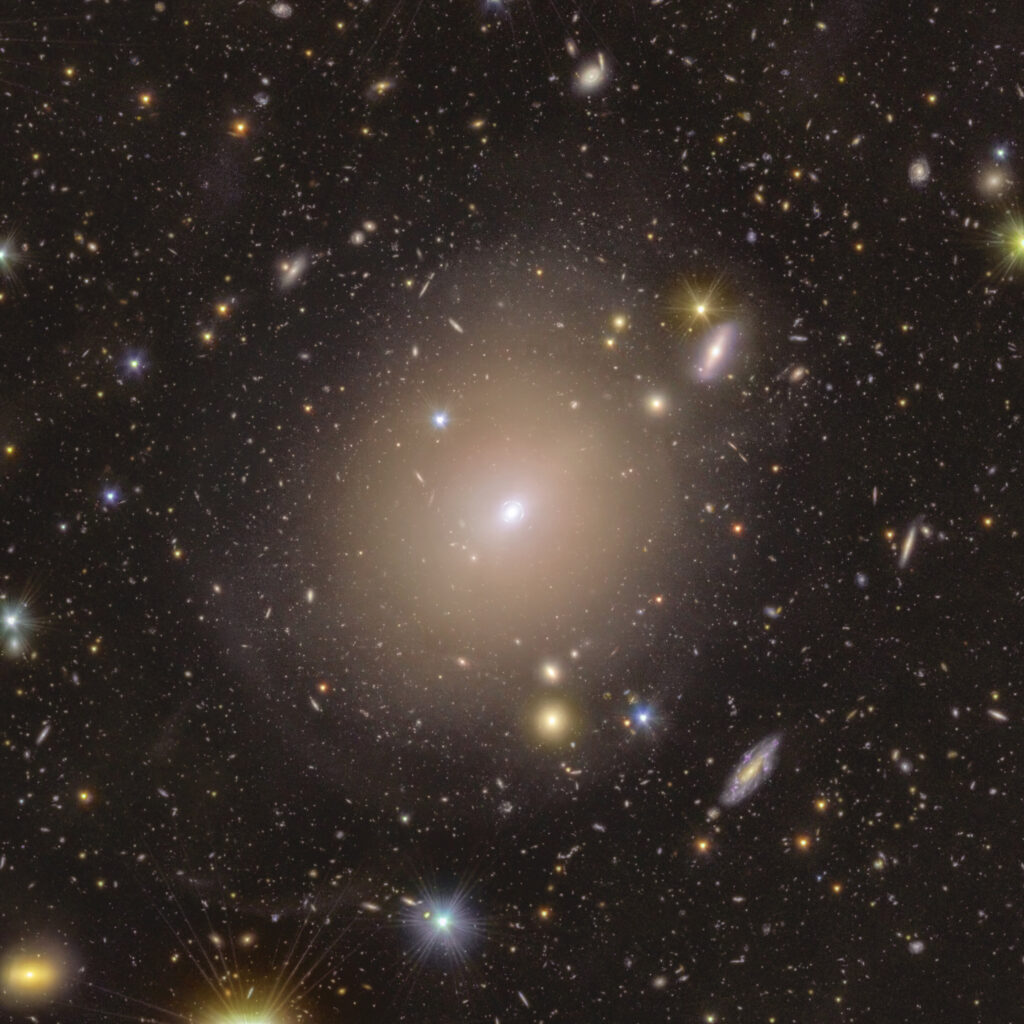
Strong gravitational lensing provides a window into the distant universe, offering clues about the distribution of mass, including the mysterious dark matter, in the universe. By studying the distortions caused by lensing, scientists can gain insights into the expansion of the universe and explore regions of space that would otherwise be hidden from view. In this case, the Einstein Ring around NGC 6505 opens up a new opportunity for scientists to investigate the effects of invisible dark matter, which is thought to make up a significant portion of the universe’s mass, yet remains undetectable by traditional means.
The discovery of the Einstein Ring by the Euclid mission has been described as “incredibly special” by Conor O’Riordan, a scientist from the Max Planck Institute for Astrophysics and lead author of the scientific paper detailing the discovery. O’Riordan emphasizes the rarity of such lensing events and the importance of the alignment that allowed for the formation of the ring. He notes that this particular Einstein Ring is not only scientifically valuable but also aesthetically stunning, offering a glimpse into the beauty of the universe as seen through the lens of general relativity.
Valeria Pettorino, the ESA Euclid Project Scientist, also expressed excitement over the discovery. Despite the fact that NGC 6505 had been known to astronomers for over a century, this hidden Einstein Ring had never been observed before. This finding showcases the power of the Euclid mission, which is designed to explore the dark universe and provide insights into phenomena that were previously out of reach. The discovery serves as a testament to Euclid’s capabilities and offers hope for even more groundbreaking discoveries as the mission progresses.
The Einstein Ring around NGC 6505 is just one of the many exciting findings expected from the Euclid mission, which aims to map out the structure of the universe and study the effects of dark energy and dark matter. The primary goal of Euclid is to detect and measure the subtle effects of weak gravitational lensing, where the light from background galaxies is mildly stretched or displaced due to the gravitational influence of foreground objects. While the Einstein Ring is a striking and rare example of strong gravitational lensing, Euclid’s true mission will involve analyzing billions of galaxies to study the more subtle effects of weak lensing and gain a deeper understanding of the universe’s expansion.
Euclid’s mission is poised to revolutionize our understanding of the universe. By creating the most detailed 3D map of the cosmos yet, the space telescope will provide a wealth of data that can be used to study the distribution of dark matter and dark energy, both of which are among the greatest mysteries in modern physics. In fact, Euclid is expected to uncover around 100,000 strong gravitational lenses during its mission, providing an unprecedented opportunity for scientists to study the effects of gravity on a cosmic scale.
The significance of this discovery cannot be overstated. In just the early stages of its mission, Euclid has already uncovered a stunning and rare Einstein Ring, a phenomenon that had previously eluded astronomers despite the long history of the galaxy it surrounds. This finding is a powerful reminder of the vast potential that space exploration holds, as even in familiar areas of the sky, there are still hidden wonders waiting to be uncovered. The success of the Euclid mission thus far demonstrates its extraordinary capabilities and sets the stage for future discoveries that could reshape our understanding of the universe.
As the Euclid mission continues its survey of the sky, it is expected to produce an immense amount of data, gradually constructing a 3D map of the universe that will provide valuable insights into the nature of dark energy and dark matter. This map will not only deepen our understanding of the cosmos but also help scientists answer some of the most fundamental questions about the universe’s formation, structure, and evolution. With its groundbreaking discoveries and its ambitious goals, the Euclid mission is well on its way to becoming one of the most important space missions of the decade, and its discoveries will likely shape our understanding of the universe for years to come.
More information: Euclid: A complete Einstein ring in NGC 6505, Astronomy and Astrophysics (2025). DOI: 10.1051/0004-6361/202453014
